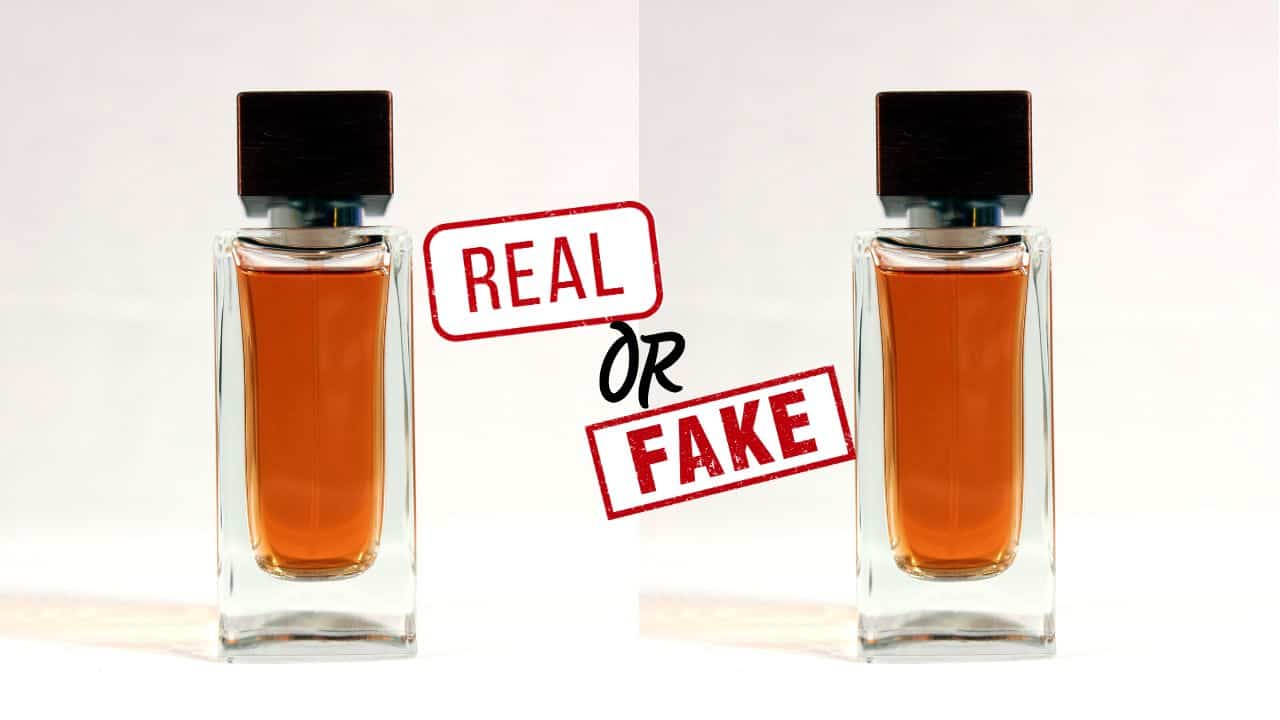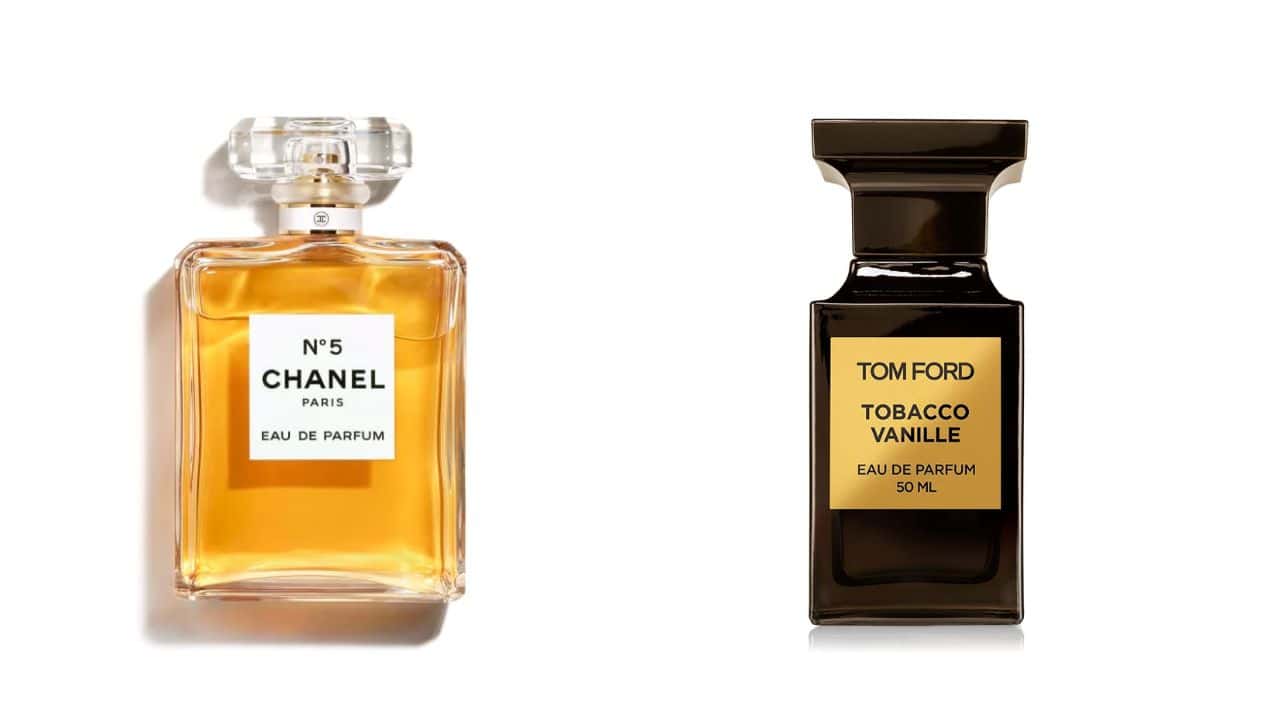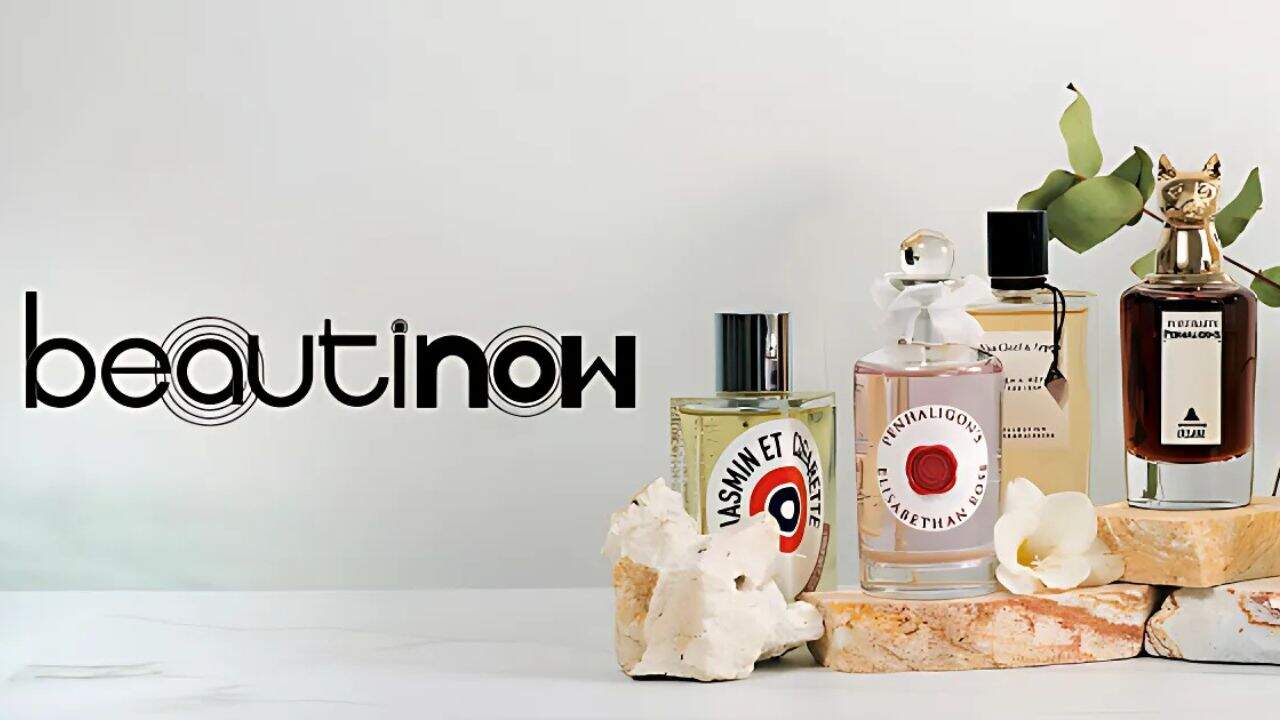How to Spot Fake Perfume: Complete Authentication Guide

In today’s fragrance market, knowing how to spot fake perfume has become essential for every perfume lover. With counterfeit fragrances flooding online marketplaces and discount retailers, consumers face increasing risks of purchasing substandard, potentially dangerous fake products. This comprehensive guide will teach you proven fake perfume detection methods, helping you distinguish between authentic and counterfeit fragrances before making your purchase.
Counterfeit perfume identification isn’t just about avoiding disappointment—it’s about protecting your health, your wallet, and your fragrance experience. Fake perfumes often contain harmful chemicals, lack the complexity of genuine fragrances, and can cause skin irritation or allergic reactions. By mastering these authentication techniques, you’ll become a savvy fragrance shopper who never falls victim to counterfeit scams.
Why Fake Perfumes Are Dangerous
The counterfeit fragrance industry represents a multi-billion-dollar threat to consumers worldwide. Understanding why fake fragrance signs matter goes beyond simple quality concerns—it’s about your safety and well-being.
Health risks of counterfeit perfumes include exposure to toxic chemicals not approved for cosmetic use. According to the U.S. Consumer Product Safety Commission, fake perfumes frequently contain dangerous substances like methanol, antifreeze, and even urine. These harmful ingredients can cause severe skin reactions, respiratory problems, and long-term health complications.
Financial implications extend beyond the immediate purchase price. When you buy fake perfumes, you’re not only wasting money on inferior products but also potentially funding illegal operations. Additionally, counterfeit fragrances typically last only a few hours compared to the 8-12 hour performance of authentic perfumes, making them poor value investments.
Legal consequences can affect buyers in some jurisdictions. While purchasing counterfeit goods is generally legal for personal use, knowingly buying fakes can complicate insurance claims and warranty issues. More importantly, supporting counterfeit operations indirectly harms legitimate businesses and innovation in the fragrance industry.
The psychological impact shouldn’t be underestimated either. Discovering you’ve purchased a fake perfume after forming an emotional connection to the scent can be deeply disappointing and erode confidence in future fragrance purchases.
Visual Signs of Counterfeit Perfumes
The first line of defense in authentic vs fake perfume identification involves careful visual inspection. Professional counterfeiters have become increasingly sophisticated, but telltale signs still distinguish genuine products from fakes.
Packaging Red Flags
Original perfume verification begins with examining the outer packaging. Authentic perfumes feature precise, high-quality printing with sharp text and vibrant colors. Counterfeit packages often display blurry logos, inconsistent fonts, or color variations that don’t match official brand standards.
Look for these specific fake perfume packaging signs:
- Typography inconsistencies: Authentic brands maintain strict font standards across all products. Fake packages frequently use slightly different fonts, incorrect letter spacing, or substituted characters that look similar but aren’t identical to genuine typography.
- Color accuracy: Luxury fragrance brands invest heavily in precise color matching across all packaging materials. Counterfeits often display subtle color variations, particularly in gradient backgrounds or metallic accents that require specialized printing techniques.
- Material quality: Genuine perfume boxes use high-quality cardboard with specific textures and finishes. Fake boxes typically feel flimsy, use cheaper materials, or lack the premium tactile experience associated with luxury fragrances.
- Printing precision: Authentic packaging features crisp edges, perfect alignment, and consistent ink coverage. Counterfeit packages often show printing imperfections, misaligned elements, or areas where ink appears patchy or inconsistent.
Bottle and Label Inspection
Authentic perfume bottle identification requires attention to numerous details that counterfeiters struggle to replicate perfectly. Genuine fragrance bottles represent significant investments in design and manufacturing precision.
- Glass quality and weight: Authentic perfume bottles use high-quality glass with consistent thickness and a premium feel. Fake bottles often feel lighter, may have visible imperfections in the glass, or display inconsistent coloring throughout the bottle structure.
- Cap and closure mechanisms: Luxury perfume caps feature precise engineering with smooth operation and secure closure. Counterfeit caps frequently fit poorly, feel loose or overly tight, or lack the satisfying “click” associated with quality mechanical design.
- Label application and quality: Genuine perfume labels adhere perfectly without bubbles, wrinkles, or misalignment. Fake perfume bottle identification often reveals poorly applied labels with visible adhesive, crooked placement, or edges that lift or curl.
- Atomizer performance: Authentic perfume sprayers deliver a consistent, fine mist with smooth operation. Fake sprayers may produce uneven spray patterns, drip, or feel rough when operated.
Cellophane and Box Quality
Professional counterfeit perfume identification includes examining cellophane wrapping and box construction details that casual observers might overlook.
- Cellophane characteristics: Authentic perfumes use high-quality cellophane with consistent thickness and professional heat-sealing. Fake perfume cellophane wrapping often appears too thick or thin, displays uneven sealing, or lacks the crisp clarity of genuine packaging.
- Sealing quality: Legitimate fragrance manufacturers use precise sealing techniques that create clean, consistent edges. Counterfeit packages frequently show rough or uneven sealing that appears homemade or unprofessional.
- Interior packaging: Genuine perfumes include carefully designed interior packaging with custom-molded inserts, premium materials, and a perfect fit. Fake products often use generic foam, poorly fitting inserts, or lack interior protection for the bottle.
Scent-Based Detection Methods
While visual inspection provides the first authentication layer, identifying fake perfume through scent analysis offers definitive proof of authenticity. Understanding fragrance composition and performance characteristics enables confident counterfeit detection.
Authentic vs Fake Fragrance Profiles
Genuine perfume identification through scent requires understanding how authentic fragrances develop over time. Professional perfumers spend years perfecting fragrance compositions that evolve through distinct phases: top notes (first 15 minutes), heart notes (15 minutes to 2 hours), and base notes (2+ hours).
- Top note accuracy: Authentic fragrances deliver precise top notes that match official fragrance descriptions. Counterfeit fragrance smell differences become immediately apparent in the opening, where fake versions often smell harsh, overly synthetic, or completely different from genuine formulations.
- Heart note development: The middle phase reveals the fragrance’s true character and represents the most complex aspect of perfume creation. Fake perfumes typically lack this complexity, either skipping heart notes entirely or presenting simplified, linear scent profiles that don’t evolve naturally.
- Base note authenticity: Genuine fragrances conclude with rich, sophisticated base notes that provide lasting impressions. Counterfeit versions frequently fade quickly or develop unpleasant undertones as cheaper synthetic ingredients break down.
- Overall harmony: Professional perfumers create seamless transitions between fragrance phases, resulting in cohesive olfactory experiences. Fake perfumes often lack this integration, presenting disjointed scent profiles that seem assembled from incompatible components.
Longevity and Performance Tests
Authentic perfume longevity tests provide reliable counterfeit detection methods that don’t require expert-level scent analysis skills. Performance characteristics offer objective measures for authentication.
- Wear time comparison: Genuine perfumes typically last 6-12+ hours, depending on concentration and formulation. Fake perfume vs real perfume comparison reveals that counterfeits usually fade within 2-4 hours, regardless of claimed concentration levels.
- Projection and sillage: Authentic fragrances project appropriately for their intended concentration, creating pleasant scent trails without overwhelming nearby individuals. Fake perfumes often lack proper projection or create harsh, unpleasant sillage that doesn’t match genuine fragrance characteristics.
- Skin reaction testing: Apply small amounts to different skin areas and monitor for reactions. While authentic perfumes can occasionally cause sensitivity, fake perfumes more frequently produce irritation, rashes, or burning sensations due to harmful chemical additives.
- Performance consistency: Genuine fragrances perform consistently across multiple applications, maintaining the same scent profile and longevity. Counterfeit perfumes often vary significantly between uses, sometimes smelling different or performing poorly due to inconsistent manufacturing quality.
Technical Authentication Methods
Modern perfume authenticity check methods incorporate technical verification systems that provide definitive authentication results. These systematic approaches complement visual and scent-based detection methods.
Serial Number Verification
How to check perfume serial numbers involves understanding manufacturer coding systems and verification processes. Most legitimate fragrance brands implement sophisticated tracking systems for authentication and quality control.
- Location identification: Authentic perfumes display serial numbers in consistent locations, typically on the bottle bottom, box exterior, or both. Learn each brand’s standard placement patterns to quickly identify genuine products versus counterfeits that place codes incorrectly or inconsistently.
- Format recognition: Each fragrance brand uses specific serial number formats with predetermined character lengths, number-letter combinations, and sequence patterns. Research your preferred brands’ coding systems to recognize authentic formats versus randomly generated fake codes.
- Online verification: Many luxury fragrance brands offer online serial number verification systems through their official websites. These tools provide instant authentication confirmation when you input genuine serial numbers, while fake codes typically return error messages or invalid responses. The International Anti-Counterfeiting Coalition maintains resources for consumers seeking brand-specific verification tools.
- Manufacturing date decoding: Authentic serial numbers encode manufacturing dates and batch information that can be decoded using brand-specific guides. This information helps verify product freshness and authenticity simultaneously.
Batch Code Checking
Authentic perfume batch codes provide another technical verification layer that’s difficult for counterfeiters to replicate accurately. Understanding batch code systems enhances your authentication capabilities significantly.
- Batch code databases: Several online databases allow batch code verification for major fragrance brands. Websites like CheckCosmetic.net and CheckFresh.com decode batch codes to reveal manufacturing dates and authenticity verification for thousands of cosmetic and fragrance products.
- Format consistency: Each brand maintains specific batch code formats that remain consistent across product lines. Learn to recognize authentic batch code patterns for your preferred brands, making it easier to spot incorrect formatting in counterfeit products.
- Manufacturing logic: Genuine batch codes follow logical manufacturing sequences that correspond to actual production schedules. Fake batch codes often use random combinations that don’t align with known production patterns or may duplicate codes across multiple products.
- Cross-reference verification: Compare batch codes between packaging and bottles to ensure consistency. Authentic products always display matching batch codes, while counterfeits frequently show mismatched codes or missing information.
Barcode Authentication
Fake perfume barcode check methods provide additional technical verification, though this approach requires understanding barcode systems and limitations. Barcodes offer supplementary authentication rather than definitive proof.
- Format verification: Authentic products use proper barcode formats (UPC, EAN, etc.) with correct check digits and country codes. Fake products sometimes display incorrect barcode formats or impossible number combinations that don’t conform to international standards.
- Database correlation: Some barcode databases can verify product information, though coverage varies significantly between brands and markets. Use these tools as supplementary verification rather than primary authentication methods.
- Consistency checking: Ensure barcodes match between different packaging elements (box, bottle, etc.). Authentic products maintain barcode consistency, while counterfeits may show variations or missing barcodes on some components.
Brand-Specific Authentication Tips
Different fragrance houses implement unique authentication features that require brand-specific knowledge for effective counterfeit cologne detection. Understanding these distinctions improves authentication accuracy significantly.
Popular Luxury Brands
Fake Chanel perfume detection focuses on specific design elements that Chanel consistently implements across all fragrance products. Authentic Chanel bottles feature precise logo engraving with consistent depth and clarity. The iconic interlocking “CC” logo appears crisp and perfectly aligned, while fake versions often show blurry or misaligned logos.
Chanel’s signature black and white packaging maintains exact color specifications and premium cardboard quality. Fake designer fragrance signs in Chanel products include incorrect font weights, color variations, or packaging materials that feel cheap compared to authentic luxury standards.

Counterfeit Tom Ford cologne identification requires attention to the brand’s distinctive bottle design and premium packaging standards. Authentic Tom Ford bottles feature heavy, substantial glass with precise logo embossing. The signature metallic accents maintain consistent coloring and finish quality that’s difficult to replicate accurately.
Tom Ford’s minimalist packaging aesthetic demands perfect execution—any imperfections in printing, color matching, or material quality suggest counterfeit production. Pay particular attention to the font consistency and spacing in the brand name and product descriptions.
Authentic Dior perfume verification involves examining the brand’s sophisticated packaging design and bottle craftsmanship. Dior bottles typically feature elegant curves and precise logo application with consistent font styling throughout all packaging elements.
The CD logo appears in specific locations with exact sizing and placement that remain consistent across product lines. Counterfeit Dior products often display slightly incorrect logo proportions or placement that differs from authentic standards.
Mid-Range Brand Authentication
Luxury perfume authentication principles also apply to mid-range brands, though specific details vary significantly. Brands like Hugo Boss, Calvin Klein, and Versace implement their own authentication features that require individual study.
Research each brand’s official website for authentication guides and authorized retailer lists. Many brands publish detailed guides showing authentic packaging characteristics, which provide valuable reference materials for counterfeit detection.
Pay attention to brand-specific bottle shapes, closure mechanisms, and packaging color schemes that remain consistent across product lines. Mid-range brands often use distinctive design elements that are expensive to replicate accurately.
Where Fake Perfumes Are Commonly Sold
Understanding counterfeit distribution channels helps avoid fake perfume sources entirely. How to tell if perfume is real or fake becomes easier when you know which selling environments pose the highest risks.
Online Marketplace Risks
Major online platforms like eBay, Amazon (third-party sellers), and Facebook Marketplace contain significant counterfeit inventories. While these platforms implement anti-counterfeiting measures, fake products frequently slip through detection systems.
Look for seller ratings, return policies, and official authorization from fragrance brands. Legitimate sellers typically provide detailed product photos, serial numbers, and authenticity guarantees. Avoid sellers with limited feedback, stock photos only, or prices significantly below market rates.
Discount Retailer Concerns
Some discount retailers, particularly those focusing on “designer inspired” products, deliberately sell counterfeit fragrances. Stores advertising “100% authentic designer fragrances” at extremely low prices often stock counterfeit inventory.
Research retailers thoroughly before purchasing, looking for official brand authorization and customer reviews that specifically mention product authenticity. Legitimate discount retailers should provide clear return policies and authentication guarantees.
Street Vendor Warnings
Street vendors, flea markets, and unofficial retailers almost universally sell counterfeit fragrances. These venues lack accountability measures and quality controls that legitimate retailers maintain.
Avoid purchasing fragrances from any unofficial retail environment, regardless of claimed authenticity or attractive pricing. The risks of fake products, health hazards, and lack of recourse make these purchases inadvisable.
Social Media Sellers
Individual sellers on Instagram, Facebook, and other social platforms frequently offer counterfeit fragrances, often claiming to sell “overstock” or “wholesale” authentic products at steep discounts.
Exercise extreme caution with social media purchases, as these transactions offer minimal buyer protection and authentication verification opportunities. Legitimate fragrance sellers typically operate through established retail channels with proper business credentials.
How to Buy Authentic Perfumes Safely
Developing safe purchasing habits represents the most effective original perfume authentication method. Prevention through careful retailer selection eliminates most counterfeit risks entirely.
Authorized Retailer Verification
Purchase exclusively from authorized retailers listed on brand websites or through official customer service channels. These retailers maintain direct relationships with fragrance houses and guarantee product authenticity.
Major department stores like Nordstrom, Macy’s, and Sephora represent safe purchasing environments with established authentication procedures and return policies. Online retailers like Beautinow specialize in authentic fragrances with authenticity guarantees.

Price Point Guidelines
Authentic luxury fragrances maintain relatively consistent pricing across authorized retailers. Prices significantly below market rates (30%+ discounts) often indicate counterfeit products or unauthorized distribution channels.
Research typical pricing for specific fragrances using official brand websites and authorized retailer pricing. This baseline helps identify suspicious deals that seem too good to be true.
Return Policy Verification
Legitimate fragrance retailers offer comprehensive return policies that protect buyers from counterfeit products. Look for retailers offering 30+ day return windows, authentication guarantees, and customer service support for authenticity concerns.
Avoid retailers with restrictive return policies, final sale conditions, or limited customer service options. These restrictions often indicate counterfeit inventory or questionable business practices.
Documentation Preservation
Keep all purchase documentation, including receipts, packaging, and authentication certificates. This documentation proves purchase legitimacy and supports warranty claims or return processes if authenticity questions arise.
What to Do If You’ve Bought a Fake
Discovering you’ve purchased counterfeit perfume requires immediate action to protect yourself and prevent future incidents. Understanding your options and rights helps maximize recovery opportunities.
Immediate Safety Assessment
Stop using the product immediately if you experience any skin irritation, respiratory issues, or unusual reactions. Counterfeit perfumes can contain harmful chemicals that pose serious health risks, requiring medical attention.
Document any adverse reactions with photos and medical records, as this information may be useful for reporting incidents to consumer protection agencies or pursuing legal remedies.
Return and Refund Pursuit
Contact the seller immediately to request a full refund based on product’s inauthenticity. Many legitimate retailers honor return requests for counterfeit products, even when purchased unknowingly from third-party sellers.
Provide evidence of counterfeiting through comparison photos, expert analysis, or brand authentication services. Clear documentation strengthens your refund request and may expedite resolution processes.
Payment Protection Activation
If you used credit cards or PayPal for the purchase, contact your payment provider to dispute the transaction based on receiving counterfeit goods. These services often provide buyer protection programs that cover counterfeit purchases.
Document all communication with sellers and provide evidence of counterfeiting to support your dispute claim. Payment protection services typically require detailed documentation to approve refund requests.
Reporting Considerations
Report counterfeit sales to appropriate authorities, including the platform where you made the purchase, local consumer protection agencies, and brand owners who may pursue legal action against counterfeiters.
Your reports help protect other consumers and support anti-counterfeiting enforcement efforts. Many brands operate dedicated anti-counterfeiting programs that investigate and prosecute fake product sales.
Future Prevention Strategies
Use this experience to improve future purchasing decisions by developing better authentication skills and choosing more reliable retailers. Consider creating a preferred retailer list of verified authentic sources for future fragrance purchases.
Health and Safety Concerns
The health implications of counterfeit perfumes extend far beyond simple quality disappointments. Understanding these risks emphasizes the importance of genuine perfume identification for personal safety.
Chemical Composition Dangers
Counterfeit perfumes frequently contain industrial chemicals not approved for cosmetic use. Laboratory analyses have found methanol, antifreeze, benzene, and even human waste in fake fragrance products. These substances can cause severe chemical burns, organ damage, and long-term health complications.
Unlike authentic perfumes that undergo rigorous safety testing and regulatory approval, fake products bypass all safety controls. Manufacturers of counterfeit fragrances prioritize cost reduction over consumer safety, using whatever chemicals are cheapest and most readily available.
Allergic Reaction Risks
Even individuals without sensitive skin can experience severe allergic reactions to counterfeit fragrances. The unpredictable chemical compositions and lack of quality control make adverse reactions more likely and potentially more severe than with authentic products.
Symptoms can range from mild skin irritation to severe respiratory distress, requiring emergency medical treatment. The inability to identify specific allergens in counterfeit products complicates medical treatment when reactions occur.
Long-term Exposure Effects
Regular use of counterfeit fragrances exposes users to cumulative health risks from repeated chemical exposure. Some industrial chemicals found in fake perfumes are known carcinogens or endocrine disruptors that can affect hormonal systems and overall health.
The lack of ingredient disclosure in counterfeit products makes it impossible to assess long-term health risks or take appropriate precautionary measures. This uncertainty represents an unacceptable risk for any cosmetic product used regularly.
Legal and Ethical Considerations
Understanding the broader implications of counterfeit fragrance purchases helps consumers make informed decisions that extend beyond personal interests. The fake perfume industry is connected to serious legal and ethical issues.
Intellectual Property Violations
Purchasing counterfeit fragrances directly supports intellectual property theft and undermines the legitimate fragrance industry. Fragrance houses invest millions in research, development, and marketing to create authentic products that counterfeiters steal and replicate without permission.
This theft reduces innovation incentives and harms companies that invest in legitimate product development. Supporting authentic fragrance purchases encourages continued innovation and quality improvements in the industry.
Criminal Organization Funding
The counterfeit goods industry often connects to organized crime networks that use profits to fund other illegal activities. Purchasing fake perfumes may indirectly support human trafficking, drug distribution, and other serious criminal enterprises.
Legitimate fragrance purchases support legal businesses, employment, and economic development instead of criminal organizations that harm communities and individuals.
Consumer Protection Weakening
Widespread acceptance of counterfeit goods undermines consumer protection systems and legitimate business practices. When consumers tolerate fake products, it reduces pressure on enforcement agencies to combat counterfeiting effectively.
Supporting authentic fragrance purchases strengthens consumer protection systems and encourages better enforcement against counterfeit operations that harm consumers and legitimate businesses.
Technology and Authentication Tools
Modern technology provides sophisticated tools for perfume authenticity verification that complement traditional detection methods. Understanding these technologies enhances authentication capabilities significantly.
Mobile Authentication Apps
Several smartphone apps help verify product authenticity through barcode scanning, serial number checking, and image analysis. Apps like Authentic or Not and brand-specific authentication tools provide instant verification results.
These apps continuously update their databases with new product information and counterfeit detection patterns, improving accuracy over time. However, use these tools as supplementary verification rather than sole authentication methods.
Blockchain Verification
Some luxury fragrance brands experiment with blockchain-based authentication systems that provide immutable verification records. These systems create permanent authentication trails that are virtually impossible to counterfeit.
While still emerging, blockchain authentication represents the future of anti-counterfeiting technology and may become standard practice for luxury fragrance brands.
Advanced Chemical Analysis
Professional authentication services use chemical analysis techniques like gas chromatography to compare fragrance compositions with authentic samples. These services provide definitive authentication results but require professional expertise and specialized equipment.
Consider professional authentication for high-value fragrance purchases or when other verification methods produce inconclusive results.
Your Fragrance Security Checklist
Mastering how to spot fake perfume protects you from health risks, financial losses, and fragrance disappointments that plague the counterfeit market. Through careful visual inspection, scent analysis, and technical verification methods, you can confidently distinguish authentic fragrances from dangerous counterfeits.
Shop authentic fragrances exclusively at Beautinow – your trusted source for genuine luxury perfumes with a 100% authenticity guarantee.
Why choose Beautinow for authentic fragrances:
- Verified authentic products from authorized distributors only
- Professional authentication before every shipment
- 30-day authenticity guarantee with full refund protection
- Expert customer service for all authenticity questions
- Secure packaging to preserve product integrity
Your nose—and your health—deserve nothing less than the real deal. Join thousands of satisfied customers who trust Beautinow for authentic fragrance experiences.
Frequently Asked Questions
Q: What are the most obvious signs of fake perfume?
A: Poor packaging quality, blurry printing, inconsistent colors, and cheap materials indicate counterfeit products. Fake perfumes often smell harsh initially and fade quickly compared to authentic versions. Missing or incorrect serial numbers and batch codes also suggest counterfeiting.
Q: Is it safe to use fake perfume?
A: No, counterfeit perfumes pose serious health risks due to unregulated chemical compositions. They may contain industrial chemicals, allergens, or toxic substances that can cause skin reactions, respiratory problems, or long-term health issues. Always avoid using suspected counterfeit fragrances.
Q: Can fake perfumes damage my skin?
A: Yes, counterfeit perfumes frequently cause skin irritation, chemical burns, rashes, and allergic reactions due to harmful ingredients not approved for cosmetic use. The unpredictable chemical compositions make adverse reactions more likely and potentially severe.

